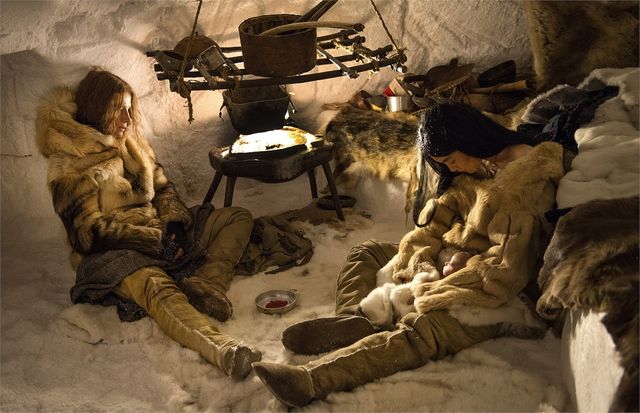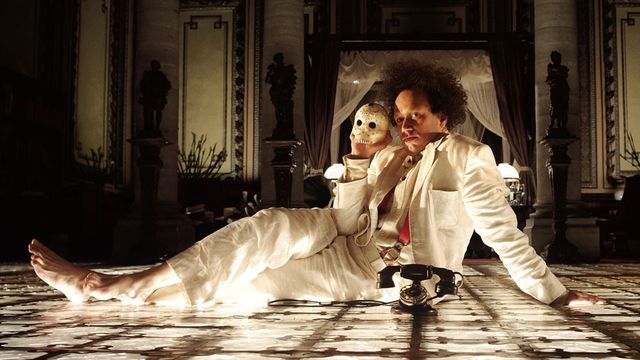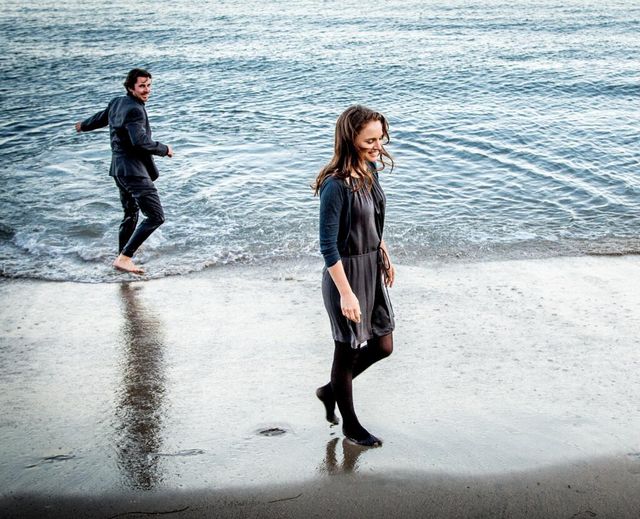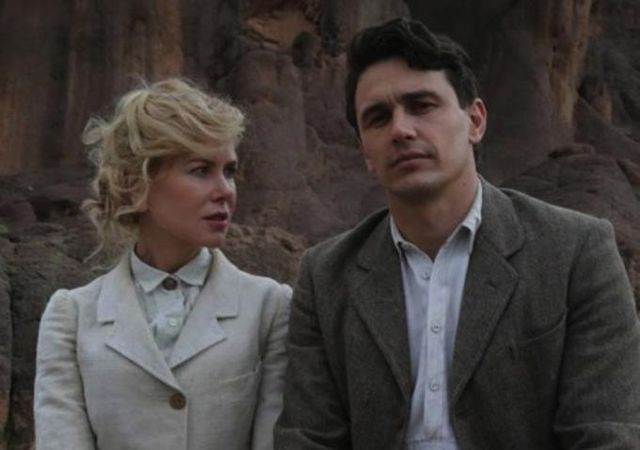Stefan Steinberg
This is the first of a series of articles on the recent Berlin international film festival, the Berlinale, held February 5-15, 2 015.
This is the first of a series of articles on the recent Berlin international film festival, the Berlinale, held February 5-15, 2 015.
Some of the major entries at this year’s 65th Berlin International Film Festival (Berlinale) gave the distinct impression that certain prominent US and European directors had consciously pulled down the shutters to what was going on around them. War raging in the middle of Europe, accelerating inequality, social decline at a level unknown since the 1930s…none of these issues got a look in.
Instead, having hermetically sealed off their work as much as possible from the social and political upheaval currently taking place across the globe, these directors were then free to concentrate on their pet themes—identity politics, sex and death—in an especially self-absorbed manner.
Nobody Wants the Night
 Nobody Wants the Night
Nobody Wants the Night
Two years ago, this reviewer criticised the Spanish director Isabel Croixet (born 1960) at the 2013 Berlinale for offering to share her “perplexity” with her audience. Croixet’s latest film, Nobody Wants the Night, makes clear that behind the director’s “perplexity” is a definite agenda close to the heart of the affluent middle class—gender issues, the elevation of primitivism over civilisation and…building up one’s own bank balance.
In the past, Croixet made a number of election videos for the Spanish Socialist Workers Party (PSOE), one of Spain’s two principal bourgeois parties. Now, possibly in an attempt to distance herself from the thoroughly discredited Spanish social democrats, she has retreated to the North Pole, literally, for her new film.
In Nobody Wants the Night, American Josephine Peary (Juliette Binoche) sets off around the turn of the twentieth century to find her husband, explorer Robert Peary, who has disappeared in the course of an expedition to the North Pole. In the course of her trek across the frozen tundra, Peary is eventually forced to rely on the support of an Inuit girl (Rinko Kikuchi), who it turns out has her own reasons for finding Josephine’s husband. The labourious second half of the movie concentrates on the relationship between the two women and Josephine’s realisation that her civilised upbringing is of little use in the Arctic waste.
In the words of Binoche at a Berlin press conference: “The white, educated person goes into the wilderness and encounters a new way of feeling. I had the image of a peacock becoming a dog.… Nobody wants the night. We don’t want to go into that dark place, but sometimes we need to”.
At the same press conference, following the showing of her film (which occupied the prestigious place of festival opener), Croixet noted that her main motivation for making the movie was to counter male-oriented tales of the Arctic. “Nobody has told the story of the North Pole from the point of view of the woman”, she declared.
When asked about the gender politics at the heart of her film, Croixet made clear that her own conception of feminism was money-based: “I want more money for women”, she told journalists. “That’s what I want! More salary than them [male directors] would be great. But I agree with having the same salary”.
Croixet then when on to applaud the fact that Germany had a female “president” (i.e., Chancellor Angela Merkel) and further revealed her political standpoint with an endorsement of Hillary Clinton for US president: “Maybe if we have more women presidents. You have a president here. Maybe if we had that in Japan or in the States…maybe Hillary!”
Eisenstein in Guanajuato
 Eisenstein in Guanajuato
Eisenstein in Guanajuato
While Croixet identifies the standpoint of women as the missing link in cinematic treatment of the North Pole, the 72-year-old British director Peter Greenaway has decided to examine the work of the outstanding Russian director Sergei Eisenstein by concentrating on his sex life. Eisenstein in Guanajuato is an appalling film that says far more about the demoralised and distorted predilections of Greenaway than it does about the famed Soviet filmmaker.
According to Greenaway, who wrote the screenplay, the loss of his virginity to a Mexican man at the age of 33 is the key to understanding the evolution of Eisenstein’s cinema.
The background to Greenaway’s stupid work was the trip by Eisenstein to Mexico in 1931 to plan a film, Que Viva Mexico!, to be funded by pro-Communist sympathisers in the US. As one critic noted about Greenaway’s film, one does not learn much about the problems Eisenstein encountered in Mexico because he hardly ever leaves the bedroom!
This reviewer fled the cinema after the fifth appearance of Eisenstein’s genitalia in the first hour of the movie.
At the subsequent press conference, Greenaway wallowed in the applause of the assembled journalists, and went on to extol the virtues of Eros and Thanatos in cinema. “Cinema is surely, surely, surely, all about sex and death, isn’t it? Most Western art is all about sex and death from the very, very beginning to the very, very end”.
Greenaway’s films and outlook speak to a very definite social layer who avidly seek to obscure the social realities, including the source of their own wealth and social status—i.e. forms of exploitation determined by concrete social and historical relations—by emphasising “universal” and “timeless” motives such as sex and death.
Knight of Cups
 Knight of Cups
Knight of Cups
In regard to one of American director Terrence Malick’s recent films, this web site concluded, while acknowledging that the work contained a number of striking images, “The Tree of Life is bound up with a certain intellectual quackery, which itself reflects some of the problems of cultural life in the past several decades”.
Malick’s latest film premiered at the Berlinale takes such intellectual quackery to new heights, or depths. Knight of Cups has no discernible plot. Its main character, screenwriter Rick (Christian Bale) wanders listlessly through Los Angeles musing over the worthlessness of his life and life in general—communicated in a voice-over. Rick says very little. Apparently Rick has it all—wealth, Armani suits, career at a peak, a variety of beautiful women (often half-dressed or naked)—but it all seems hollow.
The film is laden with bits of quasi-philosophising balderdash such as “when one gets older, one thinks the confusion would lessen, in fact, it only increases”, and “we are all just fragments with the impossible task of piecing together the fragments”.
Like Greenaway, Malick (born 1943) has his worshippers who are quite prepared to trade in any sort of coherent narrative or delineation of character for a few stunning images. One idolater describes Knights of Cups as a “gorgeous, mesmerising, pensive, exquisite companion piece to The Tree of Life ”. Others maintain that Malick’s new film is a critique of the Hollywood Dream.
In fact, below the surface (and there is not much below the surface) lurks Malick’s apparently growing disenchantment with humanity as a whole. At one point in Knight of Cups, Rick walks past a line of homeless camped under cardboard coverings on LA’s “Skid Row”. The voice-over declares: “Sometimes I wish for a deluge that would wash everything away”.
Queen of the Desert
 Queen of the Desert
Queen of the Desert
Veteran German director Werner Herzog (born 1942) avoids the worst excesses of Greenaway and Malick in his new film Queen of the Desert,which has been described as a companion piece to David Lean’s classicLawrence of Arabia (1962). The central character in Queen of the Desert is the historical figure of Gertrude Bell (played by Nicole Kidman), who broke with the traditional role of an upper-class English woman at the start of the twentieth century to take off to the Middle East as explorer and later diplomat.
In her activities as a diplomat, Bell played a key role in establishing borders in the Middle East, most notably those of Iraq and Jordan, which helped British imperialism to maintain its influence over the region. The renewed interventions in recent years by Western imperialist powers have brought chaos and immense suffering to the region. There are certainly sufficient grounds to draw definite historical parallels to and conclusions about the disastrous role of the great powers in the Middle East.
This is not, however, the road that Herzog chooses to take. Bell’s role in drawing up the boundaries of Iraq and Jordan is briefly mentioned at the end of the film, but Herzog prefers to concentrate most of his work on Bell’s frustrated relationships with various male contemporaries, while highlighting what he describes as the “natural beauty” of the region.
In tediously predictable fashion, Herzog told the press that his aim was “to tell a story, not give a history lesson”. When questioned on the politics of the region at the press conference in Berlin, Nicole Kidman passed the buck back to Herzog, saying: “I tried to get Werner to give me a history lesson and he just said: ‘Nicole, this is too extensive’.”
Herzog is on record criticising the demonisation of Muslims by the media, but to the extent that he avoids a genuine historical approach in his new film, he provides a cover for the Western powers that bear responsibility for the complete breakdown of social, political and ethnic relations in the Middle East.
This review has concentrated on a number of the most flawed movies at the Berlinale to draw out some of the ideological and artistic obstacles standing in the way of filmmakers. At the same time, there were films at the festival, new and old, that did adopt a serious approach to history and social life, most notably the documentary The Memory of Justice (1967) by the French director Marcel Ophüls, which deals with the Nuremberg Trials and the aftermath of the Second World War.
Subsequent articles will discuss The Memory of Justice and some of the other more interesting films on view at the festival.
No comments:
Post a Comment